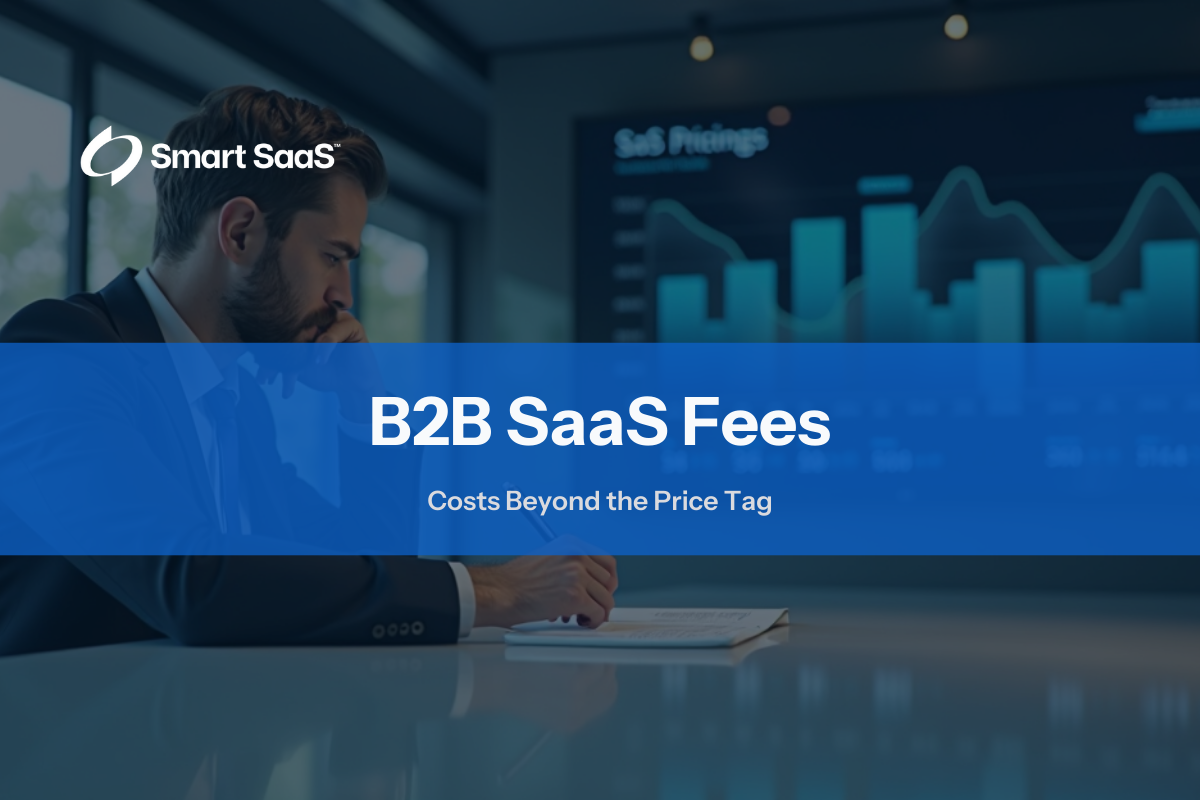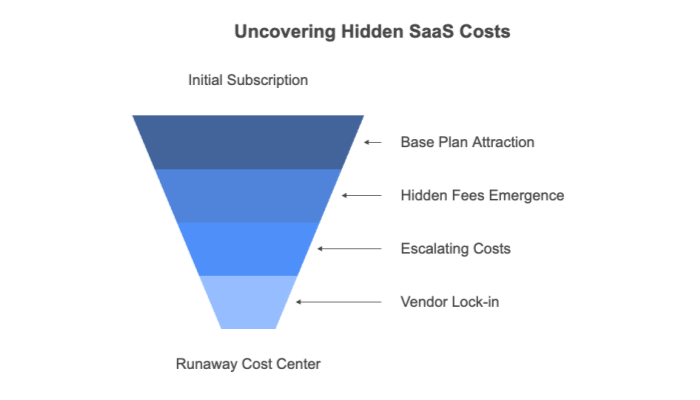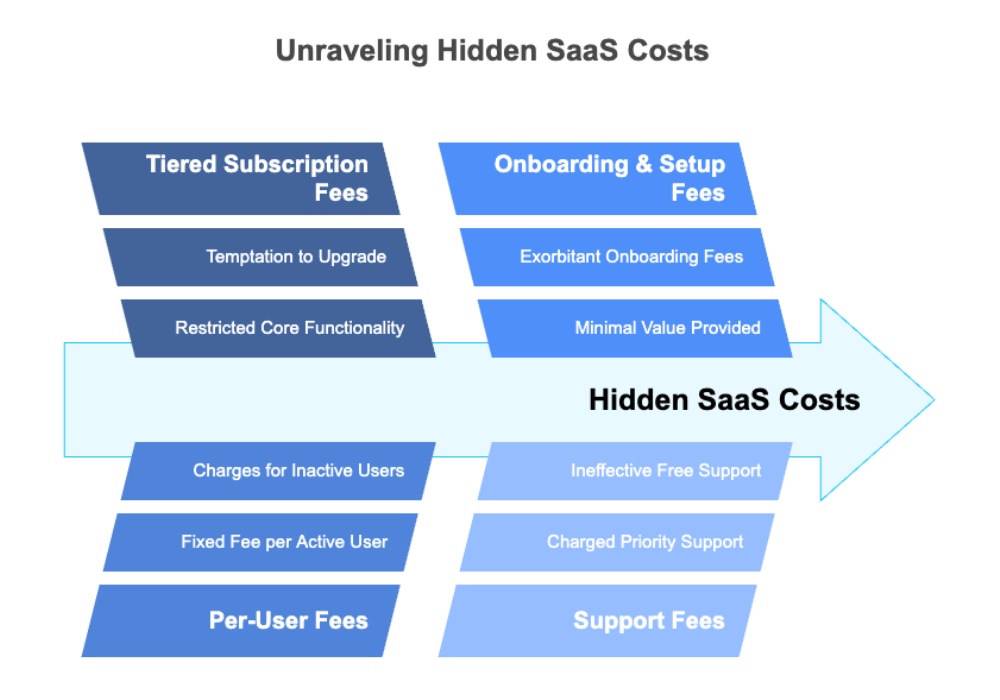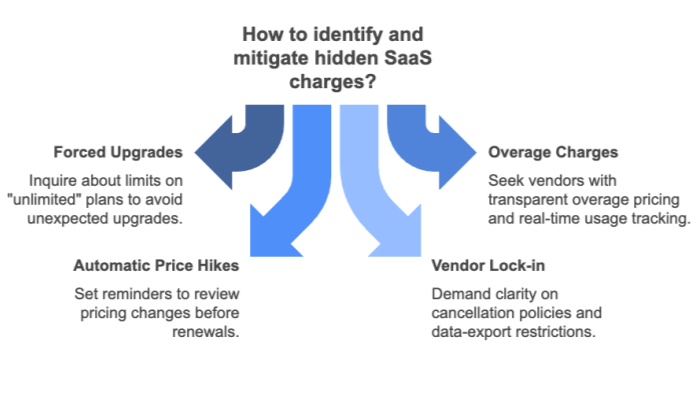

Thursday, March 27, 2025
Josh Cable
SaaS adoption is soaring – and so are SaaS fees.
On a per‑employee basis, organizations now spend more on SaaS subscription fees than they do on healthcare coverage.
With more than 100 SaaS tools in a typical tech stack, software as a service has quietly become one of the biggest cost centers for the average business.
And prices keep going higher.
According to the Vertice SaaS Inflation Index, 55% of SaaS vendors raised their rates in 2024. SaaS prices are expected to increase more than three times faster than consumer inflation across the G7 nations in 2025.
How did things get so out of hand?
SaaS was supposed to be a simple, affordable alternative to on‑premises software. The promise: Let the vendor handle the tech tedium while you run your business. Just pick a plan, pay the subscription fee, and log on.
But as global SaaS sales have surged, scores of startups, investors, and developers have flooded the market with new applications for every imaginable business niche.
Instead of driving prices down, the proliferation of SaaS vendors has sparked a free‑for‑all – or, more accurately, a fee‑for‑all.
In this modern‑day gold rush, many providers have weaponized SaaS fees to maximize their take – ensuring that once customers commit, the true costs go far beyond the advertised price.
Keep reading to learn about the hidden SaaS fees and fine‑print tactics providers use to drain your budget – and how you can fight back with smarter software investments.

When SaaS emerged in the early 2000s, it offered a simpler, more flexible alternative to traditional on‑premises software. By shifting hardware maintenance, system administration, and software updates to the provider, SaaS allowed businesses to reduce IT overhead and focus on their core operations.
While SaaS made business software more accessible, SaaS pricing structures have become a minefield of hidden fees and escalating costs.
On the surface, SaaS subscription fees seem straightforward. But dig a bit deeper and you’re likely to find the true costs stashed behind paywalls, embedded in convoluted service agreements, and waiting to hit your budget when you least expect it.
With Dumb SaaS – a catch‑all for the machinations of traditional SaaS vendors – the subscription fee is just the beginning.
Once businesses are on board, the real costs start piling up. Dumb SaaS providers frequently woo businesses with base plans that seem like a bargain, only to sucker‑punch them with a flurry of fees after they’re locked in.
Some fees are subtle, some are outright predatory. The result is the same regardless: A seemingly predictable expense turns into a runaway cost center.


Not all SaaS fees are hidden in the fine print. Some are baked right into the pricing model, making them easy to accept as unavoidable costs of doing business. While these charges might seem like standard fare, they can quickly spiral out of control if you’re not paying close attention.
In a tiered pricing model, SaaS vendors charge progressively higher rates for access to more features, storage, or user seats.
At first glance, tiered pricing seems straightforward: The more you pay, the more you get. But Dumb SaaS providers restrict core functionality at lower tiers, making upgrades feel like a necessity.
Even if you’re not contemplating an upgrade, traditional SaaS providers have gamified the user interface to ensure the temptation is always there. Whether it’s a popup prompt or a grayed‑out button on the dashboard, premium features are dangled in plain sight – just barely out of reach until you ante up for a premium tier.
In per‑user pricing (also called pay‑per‑seat pricing), SaaS providers charge a fixed fee for each active user. This might seem like a good deal – until your business starts growing.
Suddenly, your monthly bill doubles or triples simply because your business added more team members.
To make matters worse, some Dumb SaaS providers charge full price for inactive users, while others bundle premium add‑ons into every seat. As a result, businesses are forced to pay more, even for employees who don’t need full access.
Some vendors charge exorbitant fees for onboarding, claiming it covers “white‑glove setup” or “personalized training.”
Often, these services are just paywalls for basic functionality – or a thinly veiled excuse to extract more revenue before you’ve even logged in.
Based on conventional wisdom, responsive customer support should be the baseline – not a premium‑tier privilege. However, some traditional SaaS vendors have monetized high‑quality service by charging extra for priority responses or dedicated account managers.
A common result? Customers opt for “free” support to keep their costs down, but their frustrations with chatbots, canned responses, and painfully slow turnaround times drive them to pay for the help they should’ve received in the first place.
SaaS tools need to talk to each other. Dumb SaaS providers know this, so they treat API access, third‑party integrations, and custom workflows like premium features.
Among the ways they turn a fundamental business process into an expensive headache:
These restrictions trap data inside vendor ecosystems, making it harder – and more expensive – to build a truly connected tech stack.


Some SaaS fees are obvious. Others are buried so deep in contracts, renewal terms, and usage limits that you don’t realize you’re paying them until it’s too late. These aren’t just nickel‑and‑dime charges – they’re deliberately engineered revenue traps. By the time you spot them, you’re either too reliant on the platform to walk away or the vendor has put enough obstacles in place that it’s a nightmare to switch to a new provider. Here are some of the charges that SaaS providers hope you never notice.
With Dumb SaaS, you might think you’ve signed up for an “unlimited” plan … until you discover you’ve breached a carefully concealed cap that forces you into the next pricing tier. Whether it’s API calls, storage, or user logins, once you exceed an arbitrary threshold, you’ll get a warning – followed by a mandatory upgrade.
Overage fees kick in when you exceed usage limits on storage, API calls, emails, or transactions – and they can add up fast. Some vendors even increase overage rates retroactively, meaning your bill scales exponentially before you even realize you’ve crossed a threshold. Others intentionally set low limits on lower‑tier plans, making it almost inevitable that you’ll exceed them and rack up additional charges.
Worst of all, some platforms don’t warn you when you’re approaching your limit, so you only find out when a bloated invoice lands in your inbox.
Dumb SaaS vendors try to seduce businesses with competitive introductory pricing, only to quietly increase rates annually without adding any discernible value. To make matters worse, 61% of SaaS providers deliberately mask their pricing from customers. Some bury renewal‑price increases in contract fine print, while others auto‑renew subscriptions at higher rates, hoping customers won’t notice until it’s too late. In some cases, vendors make it intentionally difficult to cancel, requiring lengthy approval processes or imposing steep exit fees to keep businesses locked in.
Flexibility is supposed to be a defining feature of software as a service. Yet many traditional SaaS providers engineer flexibility out of their service agreements. Some vendors charge stiff contract‑termination fees or require extended notice periods to cancel. Others paywall full‑data export capabilities, or embed customer data in proprietary formats that are incompatible with other software – making migration a technical nightmare. Another tactic: restricting integrations with competing platforms, forcing customers into an all‑or‑nothing commitment.
For businesses operating in highly regulated industries, compliance isn’t optional. But in the world of B2B SaaS, it often comes with an unexpected price tag. Many traditional SaaS vendors charge extra for security features, audit logs, encryption, and compliance certifications required under GDPR, HIPAA, PCI‑DSS, and other regulations. While some platforms advertise compliance readiness, they paywall critical security features, forcing businesses into higher‑tier plans or add‑on fees just to meet legal requirements.


When it comes to SaaS pricing structures, what you see is rarely what you get. In the war on customer value, Dumb SaaS providers take liberties with fees, contract terms, and data‑handling policies, ensuring that customers always pay more – whether they planned to or not.
Fortunately, there’s a smarter option. Smart SaaS™ flips the script, replacing predatory pricing tactics with a customer‑first approach that always prioritizes transparency, value, and accountability.
Here’s how Smart SaaS™ sets a new standard for B2B software as a service:
Your business doesn’t have to be collateral damage in the Dumb SaaS fee‑for‑all. Explore our free library of SaaS resources and learn the strategies you need to take control of your software strategy.
Stop rolling the dice on your SaaS spend. Start making smarter software decisions TODAY!
Many providers weaponize SaaS fees to siphon additional revenue after customers commit to their platforms. In this FAQ, we address some of the most common questions around SaaS subscription fees and explain how Smart SaaS™ helps businesses sidestep surprise fees, restrictive contracts, and other costly traps.
SaaS fees are recurring charges businesses pay to use cloud‑based software. These costs go beyond the base subscription price and often include overage fees, integration costs, premium‑support charges, and auto‑renewal price hikes. Understanding these fees is crucial to avoiding budget overruns and ensuring you’re getting real value from your software investment.
SaaS providers typically offer tiered pricing, usage‑based models, or per‑user fees. Some vendors bundle core features into lower‑cost plans, while others lock essential tools behind paywalls to push upgrades. Hidden costs such as API limits and forced renewals can drive up total expenses, making it essential to scrutinize pricing structures before committing.
Hidden fees commonly found in SaaS contracts include overage charges, forced upgrades, early‑termination penalties, premium‑support costs, and API‑access restrictions. Some vendors also increase renewal rates automatically or make data extraction difficult, trapping businesses in costly contracts. Reading the fine print and negotiating pricing terms upfront can help avoid expensive surprises for business customers.
Many SaaS vendors charge onboarding and implementation fees to cover setup, training, and integration. While some assistance may be valuable, these fees can inflate upfront costs significantly. Some vendors require paid onboarding even for simple setups, turning what should be a quick process into an unnecessary expense. Smart SaaS™ providers prioritize transparent, fair onboarding practices.
To minimize SaaS costs, audit your software usage regularly, eliminate redundant tools, and negotiate pricing before signing long‑term contracts. Look for software vendors that offer transparent pricing, clear renewal terms, and unrestricted access to core features. Opting for Smart SaaS™ solutions ensures cost predictability without hidden fees or forced upgrades.
Unlike one‑time software licenses, SaaS pricing is subscription‑based, meaning businesses make monthly or annual payments to access the platform. While SaaS can be a practical, flexible alternative to perpetual‑license software, it also introduces recurring costs as well as the risk of unanticipated fees and aggressive price hikes. By partnering with a Smart SaaS™ vendor, businesses can avoid these potential pitfalls.
